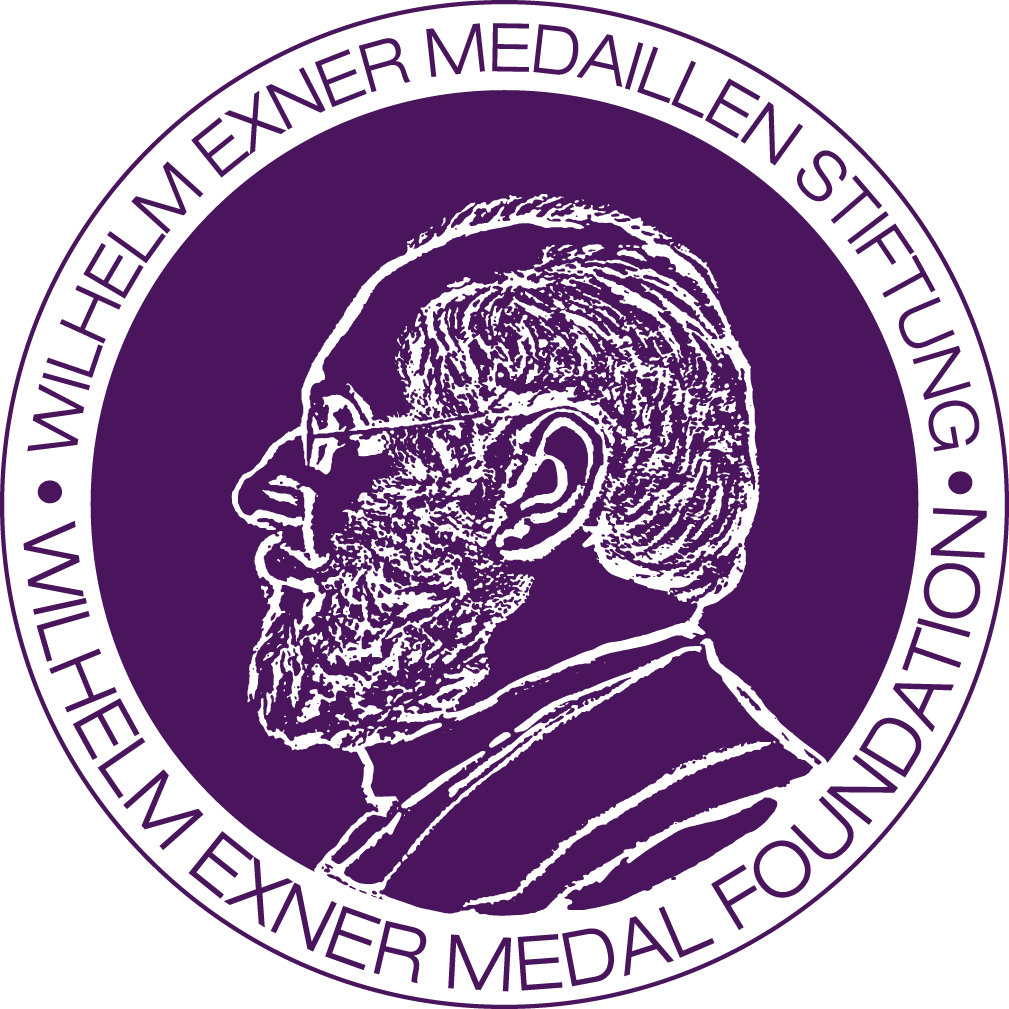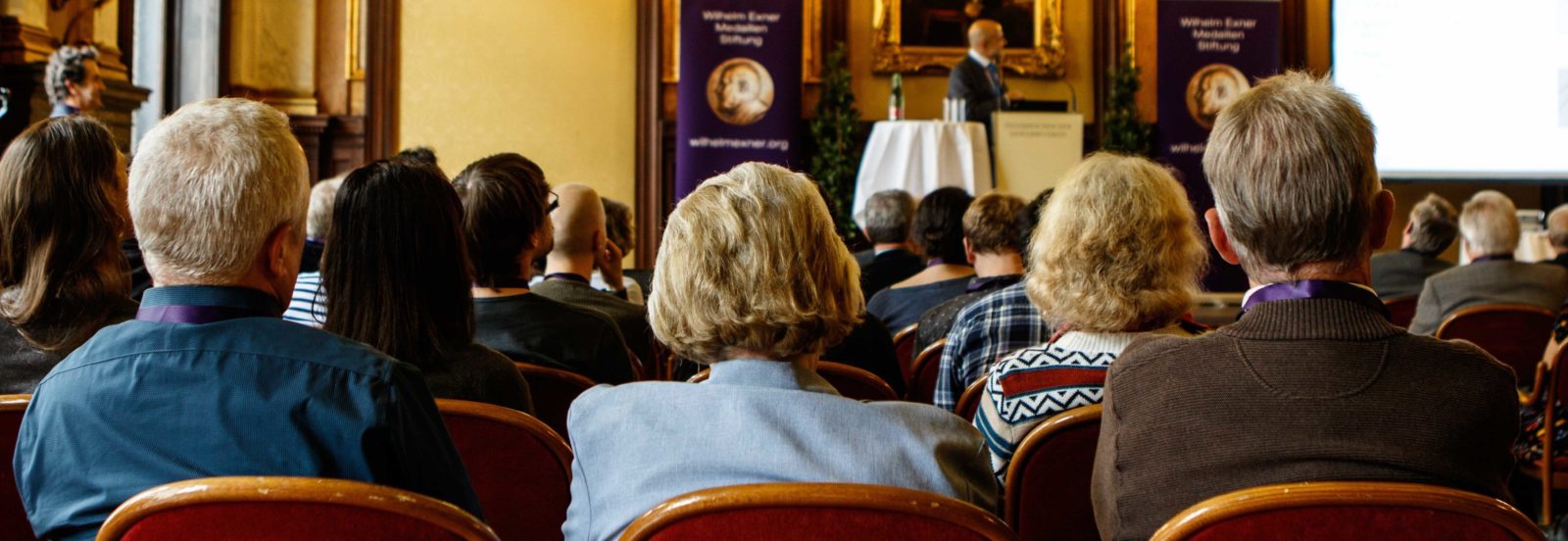- APA Science: Per “Terminator” zu neuem 3D-Druck-Verfahren
- APA Science Aussendung: Joseph M. DeSimone
- Studium.at : 3D-Druck wird serientauglich
- Rückblick Industriemagazin: „Terminator 2“ als Inspiration für schnellen 3D-Druck
- Rückblick: Fotogallerie leadersnet.at
- Rückblick Medianet: Wilhelm Exner Medaille für Joseph M. DeSimone

JOSEPH DESIMONE
Bringing the Digital Revolution to Polymer Manufacturing
Although digital technologies shape our modern world, the production of polymer products relies largely on longstanding molding techniques. Polymers were first used in injection molding 150 years ago. Since then, the basic approach to manufacturing polymer products at scale has not fundamentally changed. Despite the ascent of 3D printing technologies since the 1980s, additive methods have not delivered a meaningful alternative. Carbon’s technology—Digital Light SynthesisTM (DLS)—changes this. DLS joins advances in software, hardware, and material science to produce commercial quality parts rapidly and at scale. DLS capitalizes on the principle of oxygen-inhibited photopolymerization to generate a continual liquid interface of uncured resin between a forming part and a printer’s exposure window. This allows layerless parts to ‘grow’ continuously from a pool of resin, formed by light. Compatible with a wide range of polymers, DLS brings the digital revolution to polymer manufacturing, opening major opportunities for the future of production across diverse industries. Previously unmakeable products are already being manufactured at scale with DLS, including midsoles for the adidas Futurecraft 4D shoes, mass-customized dental products, next-generation helmets for American football, parts on Ford production vehicles, and numerous products in the consumer electronics, aerospace, and medical industries. DLS also creates valuable opportunities for product light-weighting and de-materialization, accelerated product design cycles, and local-for-local manufacturing.
Session 1 | 3D Printing

Jürgen Stampfl (TU Vienna)
3D-printing with light: Processes, materials applications
Lithography-based additive manufacturing (L-AM) was introduced in the 1980s as with the commercialization of stereolithography. Shortly after, a few other processes were introduced for additive manufacturing of polymeric parts. L-AM is still unmatched in terms of resolution and surface quality of the final printed parts. L-AM relies on photopolymers, which are selectively cured by light in a layer-based process. Using conventional photopolymers, L-AM typically leads to either very brittle parts or soft parts with a low glass transition temperature, which limits the applications which can be targeted with such materials.
In this presentation, new concepts will be presented, which allow the manufacturing of complex parts made of high-performance engineering materials, including ceramics and polymers. For polymeric parts, a new approach based on Hot Lithography will be presented, which allows the manufacturing of tough, strong and heat resistant polymeric parts. Hot Lithography is currently commercialized by Cubicure GmbH, a spin-off from TU Wien. The presentation will focus on the benefits and opportunities of Hot Lithography, and also on experiences regarding translation from academia to industry.

Johannes Homa (Lithos)
Applications for Lithography-based Ceramics and Metal Manufacturing
This contribution focuses on new developments in the field of the lithographic-based ceramic and metal manufacturing (LCM and LMM) processes. While lithographic techniques, in general, have taken a leading position in additive manufacturing (AM) of highly precise and strong ceramic parts, lithography-based metal manufacturing is relatively new.
Both techniques are based on the selective curing of a photosensitive slurry by a mask exposure process. During the structuring, a photopolymer matrix is generated, which temporarily acts as scaffold and binder for the ceramic and metallic particles, respectively, and is later on removed at elevated temperatures. Due to this approach, this technique achieves high green densities and thus, enables the production of strong, dense and accurate parts with very fine feature resolution and very smooth surfaces. The parts produced using this technology have very similar mechanical properties as classical formed injection molded parts. For metals even non-weldable materials can be processed with the LMM technology. These characteristics render these lithography-based processes as innovative and capable production methods, especially in the case of complex shaped structures, customized parts or serial production. Application examples are shown for both technologies in different areas.

Clemens Holzer (MU Leoben)
Metal and Ceramic Parts by Extrusion Based Additive Manufacturing
Extrusion Based Additive Manufacturing (or Fused Filament Fabrication FFF) uses met- al or ceramic powders such as steel, titanium, NdFeB, WC-Co, zirconium dioxide and thermoplastic binders to produce metal or ceramic parts. The so called feedstock is shaped by FFF and the polymeric components are then removed in the debinding step via thermal degradation and evaporation. Removing the major fraction with solvents in a first step facilitates the thermal process. The highly porous structure is finally sintered at temperatures below the melting point of the material and the final components are ob- tained. By this approach, a wide variety of ceramic and metallic components can be processed, and the investment cost is considerably low as compared to other additive manufacturing technologies.
One of the applications that could benefit from the FFF advantages is the production of multi-material components, which is difficult to realize with other methods. Combining different materials leads to components with multi-functionality, such as electrical con- ductive metals and insulating ceramics.
Session 2 | Nano medicine

Paul Debbage (MedUni IBK, ret.)
The last ten micrometers – targeting in medicine
Active materials such as drugs must reach their target sites in the human body, otherwise they do not exert their effects. Most drugs enter the bloodstream, many of them being injected intravenously and others being taken by mouth then entering the blood by crossing the wall of the gut. Rapid distribution around the entire body follows, and the active material must exit the bloodstream in order to arrive at its target tissue. During the meter-long transport in the bloodstream the drug is exposed to processes that reduce its amount and activity, but the major obstacles to reaching the target are found in the last fraction of a millimeter, when the drug is close to its target. This has important consequences for medical science, and these are especially severe for the branch of medicine known as nanomedicine. This talk will present alternatives.

Eva Roblegg (Uni Graz)
Impact of oral biological barriers on the fate of nanoparticles: Translation into drug delivery strategies
The most relevant and overarching goal in today’s life sciences is to address unmet medical needs and to improve outcomes for patients. Due to scientific advances of the past decade the number of potent drug candidates in development has increased dramatically, together with the opportunity to design novel treatments. However, new “designer-made” drug molecules are becoming increasingly complex, and as a consequence they are less soluble in aqueous media or prone to enzymatic degradation. The use of nano-carriers has proven advantageous at solubilizing drugs, protecting them from enzymatic degradation and prolonging their residence time. However, the rational design of such systems is still challenging, because of lack of understanding of the biological processes governing the main barriers that nanoparticles encounter during administration.
The talk will use the example of the oral mucosa to elucidate how physicochemical nanoparticle properties, such as size, surface functionalization and hydrophilicity affect colloidal stability, mobility and consequently, cellular uptake and penetration into deeper oral tissue. Based on this, examples of therapeutic nanoparticles will be discussed considering distinct delivery strategies and manufacturing processes.

Johannes Khinast (TU Graz)
Personalized Medicine – Chances and Challenges of a Paradigm Shift
Personalized medicine does not follow a “one-size-fits-all” treatment approach but emphasizes “tailor-made” delivery, meaning it addresses the patient’s individual situation and most notably his or her genetic markers. For patients, this increases the chances of treatment success and translates into fewer side effects. In particular, malignant tumors with a large variety of genes involved can be treated more effectively. However, currently only a small part of biomolecular targets can be “drugged”, which offers a tremendous potential for future breakthroughs in the pharmaceutical industry. Another main challenge is the formulation, manufacturing and delivery of individualized drugs. Here completely new routes have to be explored and a paradigm shift how we make such drugs is in the horizon. Again, this offers major opportunities for innovative companies and novel products.


